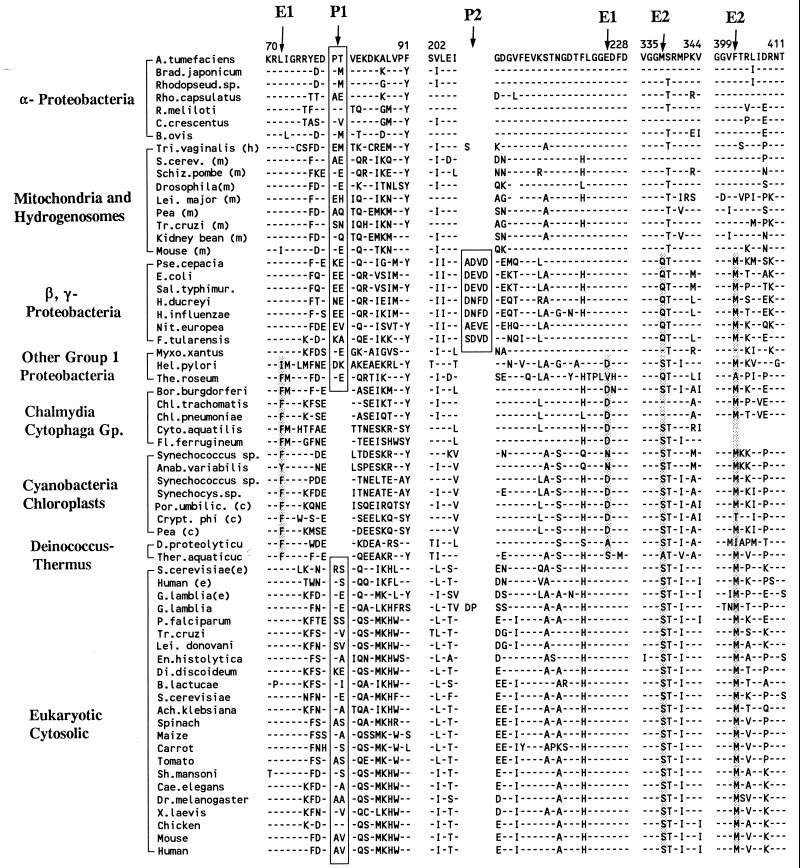FIG. 28.
Signature sequences (boxed and shaded) in the Hsp70 protein showing the relationship of eukaryotic cytosolic homologs to proteobacteria-1 group (alpha, delta, and epsilon subdivisions as well as Thermomicrobium roseum). The homologs from various prokaryotic phyla as well as different eukaryotic homologs are identified. The notations (m), (c), (e), and (h) denote mitochondrial, chloroplast, ER, and hydrogenosome homologs, respectively. The signatures P1 and P2 identify sequences that distinguish between proteobacteria-1 and -2. The presence in all nuclear-cytosolic homologs of the 2-aa proteobacteria-1 signature but not the 4-aa proteobacteria-2 signature provides evidence that these homologs are derived from a member of the proteobacteria-1 group. The signatures marked E1 are also common to proteobacteria-1 and proteobacteria-2 as well as eukaryotic cytosolic Hsp70s, supporting the above inference. The signatures E2 identify two substitutions that are present in all members of the alpha proteobacteria as well as mitochondrial and hydrogenosome homologs but absent in other groups of proteobacteria and eukaryotic cytosolic homologs. These signature suggest that the eukaryotic nuclear-cytosolic homologs have originated independently of mitochondria and hydrogenosomes.

